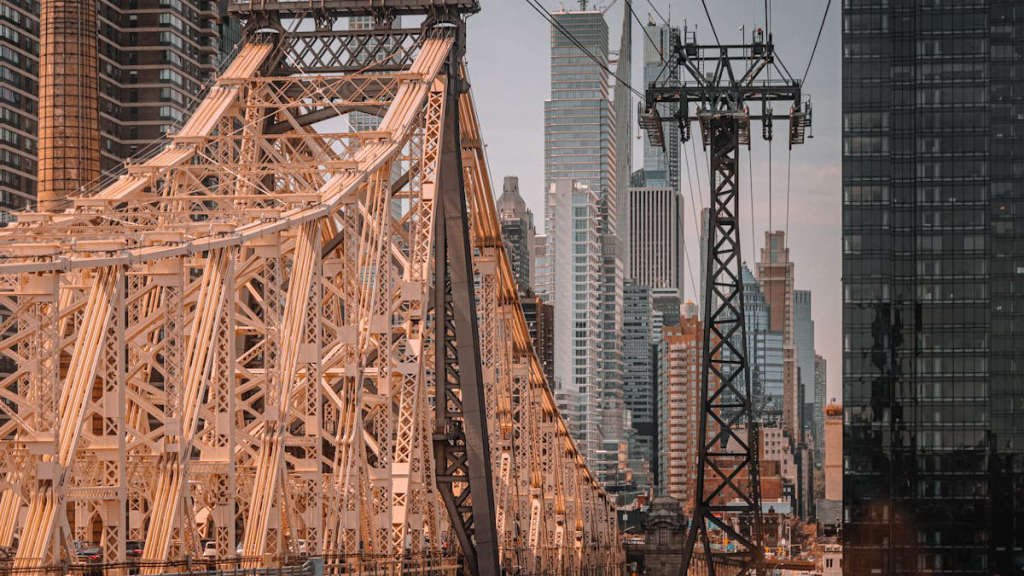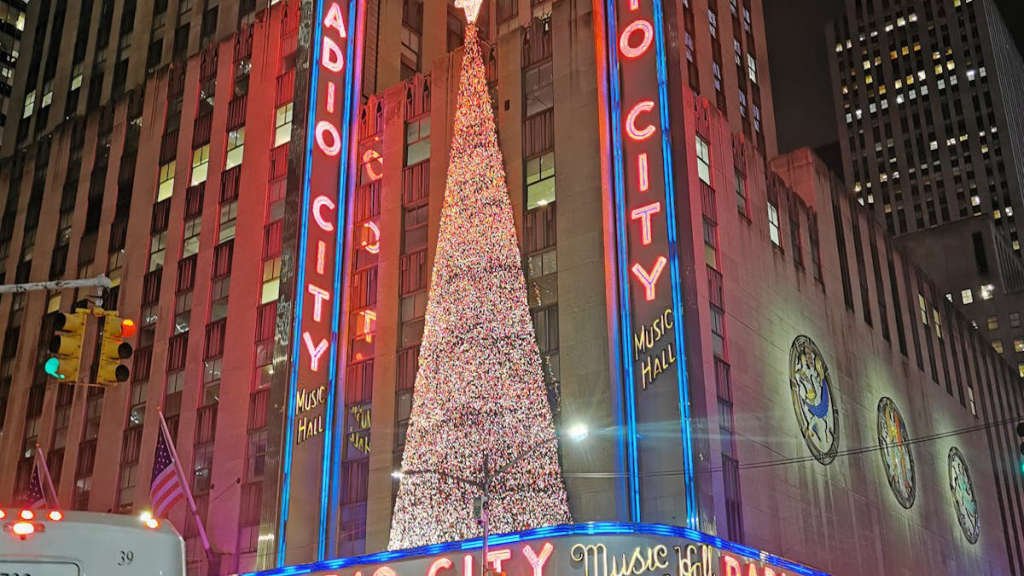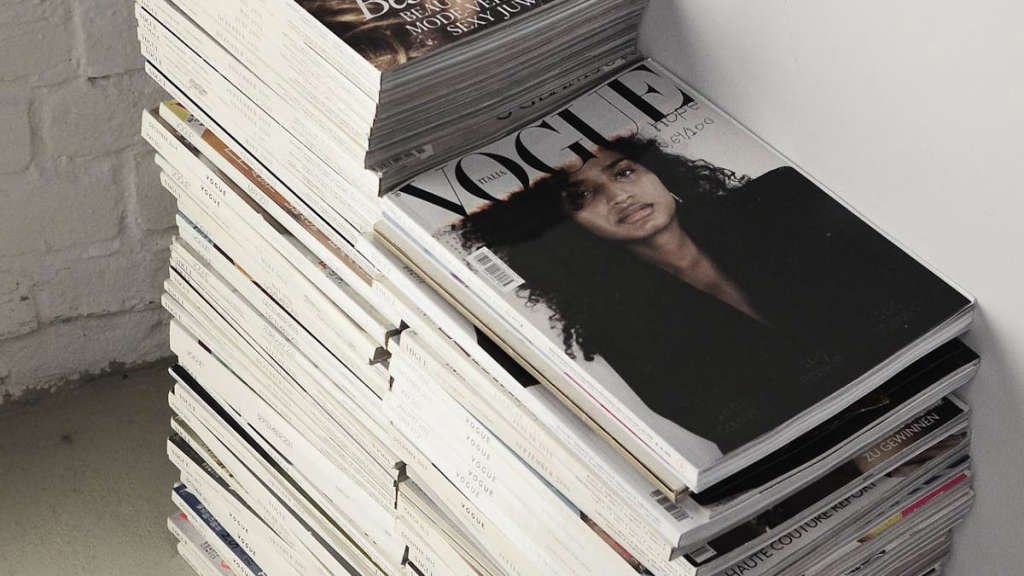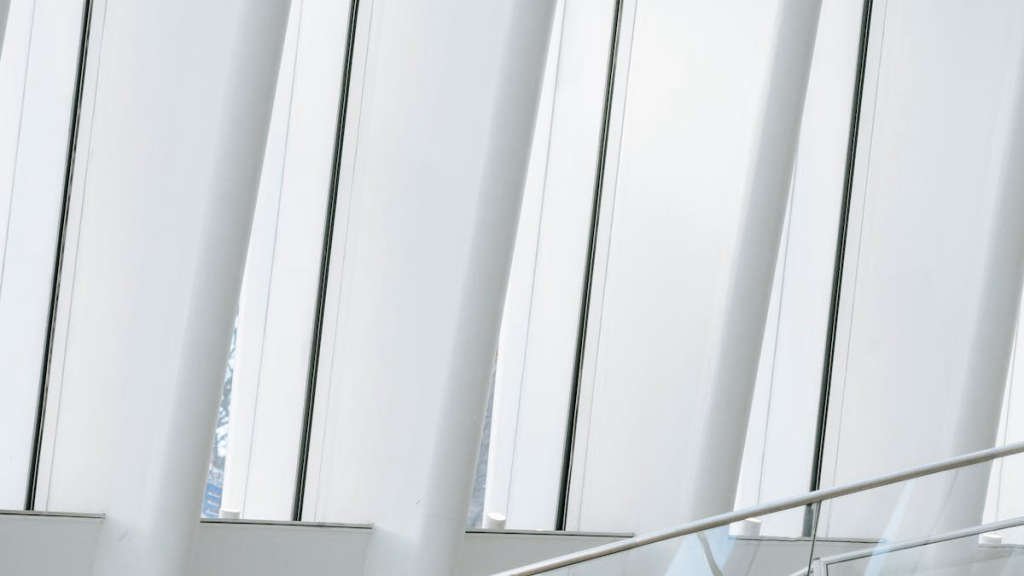
As one of the most iconic cities in the world, New York City boasts a unique and vibrant design aesthetic that sets it apart from any other metropolis. The NYC design aesthetics can be seen in the innovative architecture, eclectic street art, and diverse fashion sense that permeate the city’s streets. From the sleek skyscrapers of Manhattan to the colorful graffiti of Brooklyn, each neighborhood in NYC has its own distinct style that contributes to the overall visual identity of the Big Apple.
Main Points
- New York City is known for its unique and vibrant design aesthetic.
- The city’s design aesthetic can be seen in its architecture, street art, and fashion.
- Each neighborhood in NYC has its own distinct design style.

Historical Evolution of Architectural Styles in NYC
New York City has always been a melting pot of architectural styles, reflecting the diverse cultural influences that have shaped the city over the centuries. From the early colonial buildings to the sleek skyscrapers of today, the architectural landscape of NYC tells a fascinating story of evolution and innovation.
Colonial Era (1600s-1700s)
During the colonial era, NYC was primarily influenced by Dutch and English architectural styles. Buildings were typically made of brick or stone and featured simple, symmetrical designs. Examples of this style can still be seen in historic landmarks such as the Staten Island Museum and the Wyckoff House.
19th Century (1800s)
The 19th century saw a shift towards more ornate and elaborate architectural styles, including Gothic Revival and Italianate. The Grand Central Terminal and the Metropolitan Museum of Art are prime examples of this period, with their intricate detailing and decorative elements.
Early 20th Century (1900s-1920s)
As NYC entered the modern era, skyscrapers began to dominate the skyline. The Art Deco style became popular, characterized by bold geometric shapes and decorative motifs. Iconic landmarks like the Chrysler Building and the Empire State Building exemplify this glamorous and glamorous style.
Post-War Era (1950s-1970s)
In the post-war era, NYC saw a wave of modernist architecture, with the International Style becoming prominent. Buildings like the Seagram Building and the Guggenheim Museum showcased sleek lines and a minimalist aesthetic, reflecting the city’s growing prominence as a center of design and innovation.
Contemporary Architecture
Today, NYC continues to be a hub of architectural experimentation, with cutting-edge designs pushing the boundaries of what is possible. From the High Line to the One World Trade Center, the city’s architectural landscape remains in a constant state of evolution, reflecting the ever-changing needs and desires of its inhabitants.
- Diversity: NYC’s architectural styles have evolved over time to reflect the diverse cultural influences that have shaped the city.
- Innovation: The city has always been at the forefront of architectural innovation, setting trends and pushing boundaries.
- Historic Preservation: Despite the city’s modernization, efforts have been made to preserve and protect its historic landmarks, ensuring that NYC’s architectural heritage remains intact.

Influence of Immigrant Communities on NYC’s Design Scene
New York City has long been a melting pot of cultures and this diversity has had a significant impact on the city’s design scene. Immigrant communities from all over the world have brought their unique perspectives, skills, and creativity to the vibrant artistic landscape of the city.
Historical Influences
Throughout its history, New York City has welcomed immigrants from a wide range of countries, including Italy, China, Ireland, and many others. Each of these communities has made a lasting impact on the city’s design scene, from architecture to fashion to graphic design.
Architectural Styles
One of the most visible ways in which immigrant communities have influenced NYC’s design scene is through architecture. From the iconic brownstones of Harlem to the intricate detailing of Chinese temples in Flushing, the diverse architectural styles found throughout the city reflect the rich cultural heritage of its residents.
Fashion and Textiles
Immigrant communities have also played a vital role in shaping the fashion and textile industry in NYC. From the intricate embroidery of Indian saris to the bold patterns of African kente cloth, immigrant designers have brought a wealth of cultural influences to the city’s runways and boutiques.
Graphic Design and Street Art
The vibrant street art scene in NYC is another area where immigrant communities have left their mark. Graffiti artists from Latin America, stencil artists from Eastern Europe, and muralists from the Middle East have all contributed to the colorful tapestry of street art that adorns the city’s buildings and sidewalks.
| Culture | Influence |
|---|---|
| Italian | Architecture, Fashion |
| Chinese | Architecture, Textiles |
| African | Fashion, Street Art |
In conclusion, the influence of immigrant communities on NYC’s design scene is undeniable. Their unique perspectives and creative contributions have helped shape the city’s artistic landscape and continue to inspire designers and artists from all backgrounds.

Iconic Landmarks that Define NYC’s Architectural Identity
New York City, also known as the Big Apple, is home to some of the most iconic landmarks that define its architectural identity. From the towering skyscrapers of Manhattan to the historic brownstones of Brooklyn, NYC is a melting pot of architectural styles and influences. Here are three key landmarks that truly capture the essence of the city:
Empire State Building
The Empire State Building, located in Midtown Manhattan, is one of the most recognizable skyscrapers in the world. Standing at over 1,400 feet tall, this Art Deco masterpiece was the tallest building in the world when it was completed in 1931. Its iconic silhouette has been featured in countless movies and TV shows, making it a symbol of New York City’s skyline.
Statue of Liberty
The Statue of Liberty, a gift from France to the United States, has been a symbol of freedom and democracy since it was dedicated in 1886. Located on Liberty Island in New York Harbor, this colossal statue stands over 300 feet tall and welcomes visitors to the city with its outstretched arm and torch. It is a must-see landmark for anyone visiting NYC.
Brooklyn Bridge
The Brooklyn Bridge, connecting Manhattan and Brooklyn across the East River, is a marvel of 19th-century engineering. Completed in 1883, this iconic suspension bridge is a symbol of New York City’s growth and progress. Its Gothic arches and cable-stayed design make it a favorite spot for tourists and locals alike.
In conclusion, these three iconic landmarks – the Empire State Building, Statue of Liberty, and Brooklyn Bridge – are just a few examples of the architectural diversity and significance that define New York City. They stand as testaments to the city’s rich history, cultural heritage, and lasting impact on the world of architecture.

The Role of Public Art in Shaping the Aesthetics of NYC
Public art plays a crucial role in shaping the aesthetic appeal of New York City. From murals and sculptures to street performances and installations, public art has the power to transform a cityscape, create a sense of community, and spark conversations about culture and identity.
1. Enhancing Urban Spaces
Public art has the ability to enhance the beauty and vibrancy of urban spaces in NYC. Murals painted on the walls of buildings can turn an ordinary street into a colorful and dynamic outdoor gallery. Sculptures placed in parks and plazas add a touch of elegance and sophistication to the city’s landscape. These artistic additions not only make the city more visually appealing but also create opportunities for residents and visitors to engage with their surroundings in a meaningful way.
2. Reflecting the City’s Diverse Culture
New York City is known for its rich cultural diversity, and public art is a powerful medium for celebrating and showcasing this diversity. Street art created by local artists often reflects the city’s eclectic mix of cultures, traditions, and perspectives. Public art installations and performances provide a platform for underrepresented communities to share their stories and express their identities. By incorporating elements of different cultures into the city’s artistic landscape, public art helps to promote inclusivity and understanding among New Yorkers.
3. Fostering Community Engagement
Public art has the ability to bring people together and foster a sense of community in NYC. Community art projects invite residents to participate in the creation of public artworks, fostering a sense of ownership and pride in their neighborhoods. Public art events, such as festivals and exhibitions, provide opportunities for people to gather, interact, and appreciate the artistic talents of their fellow New Yorkers. By encouraging community engagement and collaboration, public art helps to build stronger, more connected neighborhoods in the city.
| Benefits of Public Art in NYC | Description |
|---|---|
| Enhancing Urban Spaces | Public art beautifies the cityscape and creates opportunities for engagement. |
| Reflecting Cultural Diversity | Public art celebrates the city’s diverse cultures and traditions. |
| Fostering Community Engagement | Public art brings people together and strengthens community bonds. |

Sustainability and Innovation in Urban Design in NYC
Urban design plays a crucial role in shaping the sustainability and innovation of a city like New York. As one of the most populous and diverse cities in the world, NYC faces unique challenges when it comes to urban development.
With a growing population and increasing environmental concerns, urban designers in NYC are constantly seeking innovative solutions to create a more sustainable and livable city. From building green infrastructure to promoting public transportation, sustainability is at the core of urban design initiatives in the city.
Green Spaces and Public Parks
One of the key strategies in promoting sustainability in urban design in NYC is the creation of green spaces and public parks. These areas not only provide recreational spaces for residents but also help improve air quality, reduce heat island effects, and promote biodiversity in the city.
By integrating green spaces into the urban fabric of NYC, urban designers are able to create a more resilient and sustainable city that can withstand the challenges of climate change and urbanization.
In conclusion, sustainability and innovation are at the forefront of urban design in NYC. By incorporating green infrastructure, promoting public transportation, and creating green spaces, the city is paving the way for a more sustainable and livable future.

Challenges and Triumphs in Preserving NYC’s Historic Buildings
Preserving New York City’s historic buildings is a monumental task that requires a delicate balance between honoring the past and accommodating the needs of a modern, ever-growing city. From iconic skyscrapers to charming brownstones, each building tells a unique story of the city’s rich history and cultural heritage.
Challenges:
One of the main challenges in preserving NYC’s historic buildings is the constant threat of development and gentrification. As the city continues to evolve, many historic structures are at risk of being demolished to make way for new developments. Additionally, maintaining these aging buildings can be costly, making it difficult for owners to invest in necessary repairs and preservation efforts.
Another challenge is balancing the desire to modernize these buildings for contemporary use while respecting their historical significance. Striking this balance can be a complex and often contentious process, as preservationists, developers, and city officials navigate competing interests and priorities.
Triumphs:
Despite these challenges, there have been many triumphs in preserving NYC’s historic buildings. Thanks to the tireless efforts of preservation organizations and dedicated individuals, many iconic structures have been saved from demolition and restored to their former glory.
One example is the High Line, a historic elevated railway on Manhattan’s West Side that was transformed into a public park. This project not only preserved a unique piece of New York City’s industrial past but also created a vibrant public space for residents and visitors to enjoy.
“Preserving our historic buildings is crucial to maintaining the soul of New York City and honoring the generations that came before us.”
In conclusion, the challenges of preserving NYC’s historic buildings are significant, but the triumphs are equally inspiring. By recognizing the importance of our architectural heritage and working together to protect it, we can ensure that future generations will continue to marvel at the beauty and history of our beloved city.

Emerging Trends in Contemporary Architecture: NYC’s Design Future
The city of New York has long been known for its iconic skyline and innovative architectural designs. As we move into the future, a new wave of architectural trends is emerging that is shaping the landscape of the city. From sustainable design to smart technology integration, the future of architecture in NYC is bright and exciting.
1. Sustainable Design:
One of the key trends in contemporary architecture is the focus on sustainability. Architects are increasingly incorporating green building practices and materials into their designs to reduce the environmental impact of buildings. From green roofs to solar panels, sustainable design is becoming a key priority in NYC’s architectural projects.
2. Smart Technology Integration:
Another emerging trend in contemporary architecture is the integration of smart technology into building design. From smart lighting systems to automated climate control, architects are finding innovative ways to make buildings more efficient and user-friendly. The use of technology is reshaping the way buildings are designed and experienced in NYC.
3. Adaptive Reuse:
Adaptive reuse is also becoming a prominent trend in contemporary architecture, especially in a city like NYC where space is limited. Architects are transforming old buildings and structures into new, functional spaces while preserving their historic charm. This trend not only helps reduce waste but also adds character to the city’s architectural landscape.
Conclusion:
As the architectural world continues to evolve, NYC’s design future looks promising with a focus on sustainability, smart technology integration, and adaptive reuse. The city is embracing these emerging trends to create a more vibrant and innovative architectural landscape for the future.

Conclusion
In conclusion, the concept of ‘undefined’ in design allows for a sense of fluidity and freedom, breaking away from traditional boundaries and constraints. This approach opens up new possibilities for creativity and innovation, often leading to unexpected and exciting outcomes. Embracing this mindset can result in designs that transcend categorization and merge various influences, including the unique NYC design aesthetics, to create truly captivating and original pieces. By leaving room for interpretation and exploration, designers can push the boundaries of what is considered conventional and pave the way for groundbreaking design trends to emerge.
Frequently Asked Questions
What are the key elements of NYC design aesthetics?
The key elements of NYC design aesthetics include a mix of modern and traditional styles, bold and eye-catching elements, and an emphasis on functionality and practicality.
How can I incorporate NYC design aesthetics into my home?
You can incorporate NYC design aesthetics into your home by using a monochromatic color palette, adding industrial elements like exposed brick or metal accents, and incorporating statement pieces of furniture.
Are there any famous NYC landmarks that showcase unique design aesthetics?
Yes, landmarks like the Guggenheim Museum, the Chrysler Building, and the High Line park showcase unique NYC design aesthetics.
What are some common materials used in NYC design aesthetics?
Common materials used in NYC design aesthetics include concrete, glass, steel, and reclaimed wood.
How can I add a touch of NYC design aesthetics to my workspace?
You can add a touch of NYC design aesthetics to your workspace by incorporating sleek furniture, geometric patterns, and pops of color inspired by the city’s vibrant energy.
